
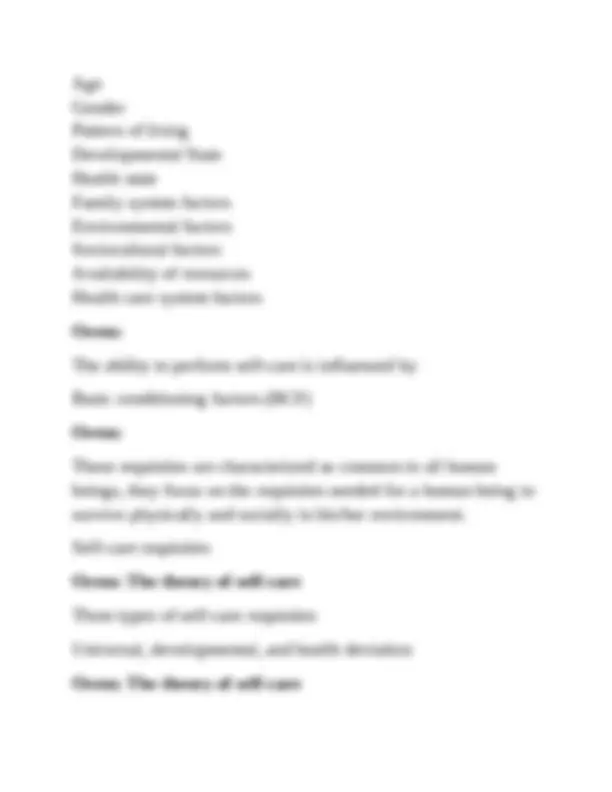
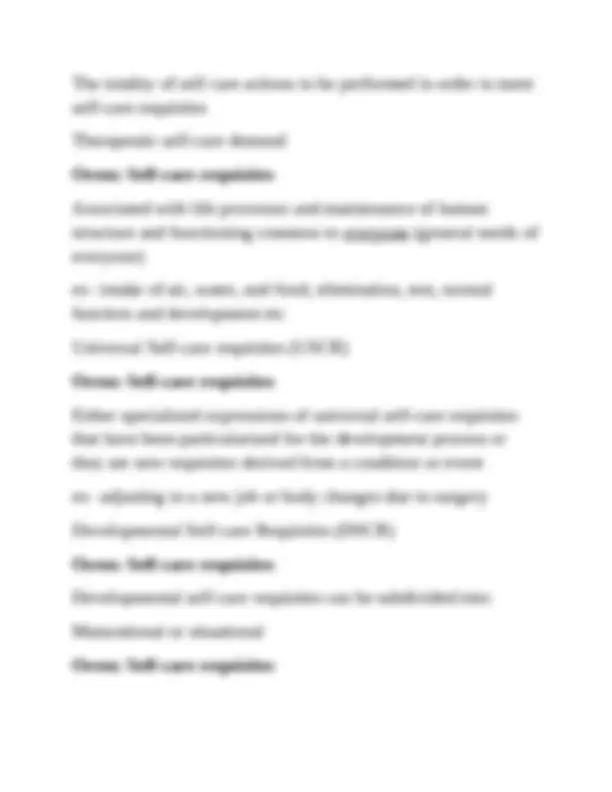
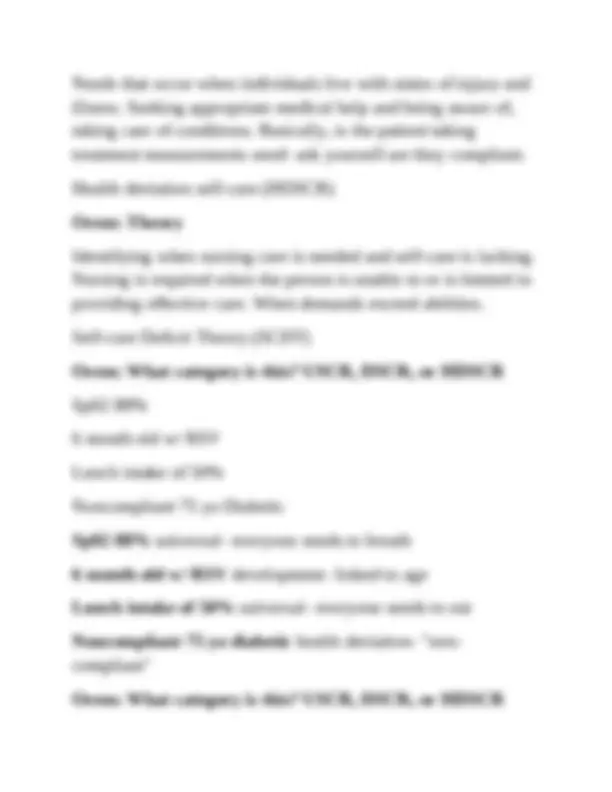
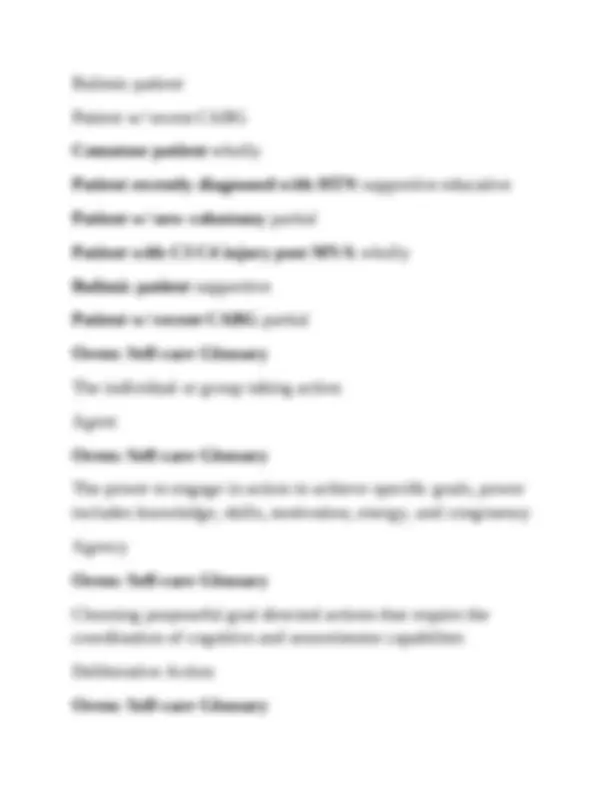
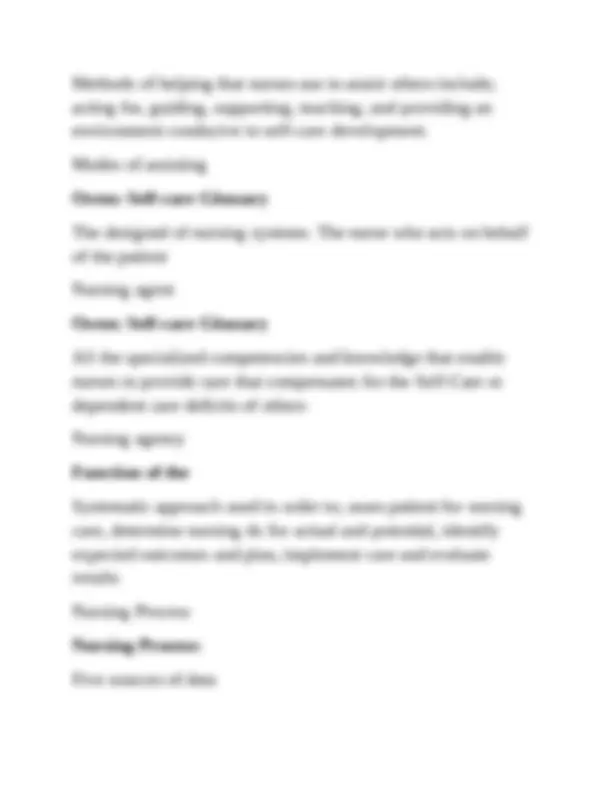
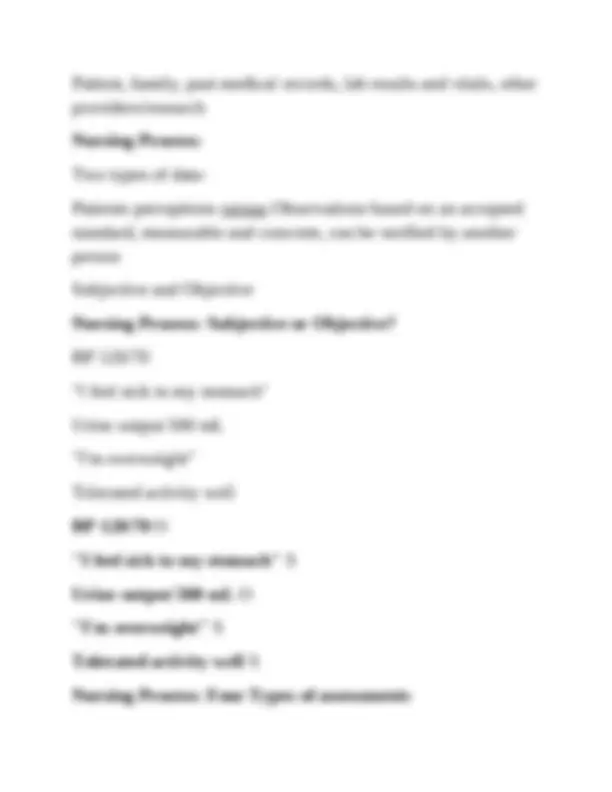
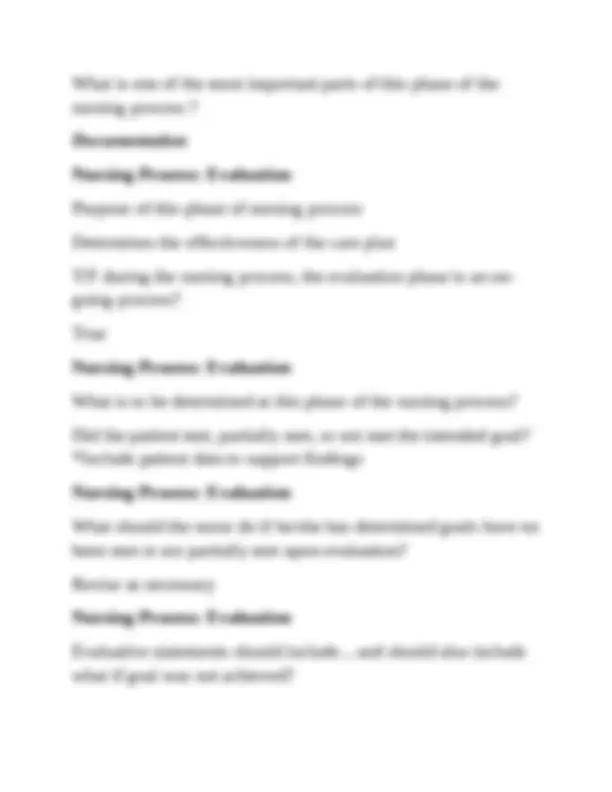
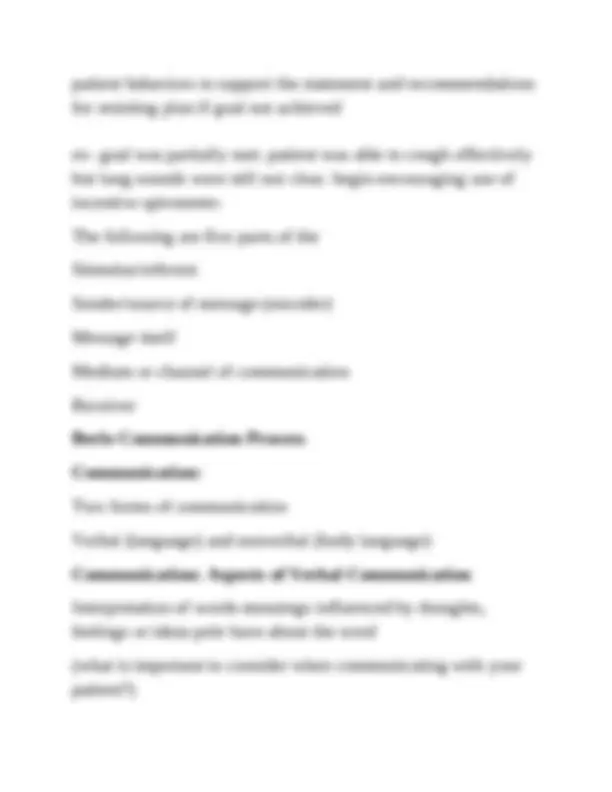
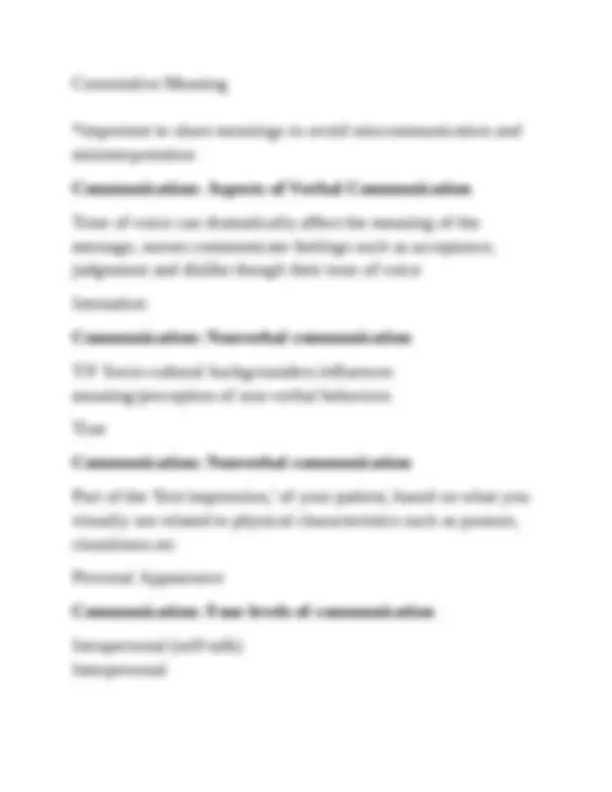
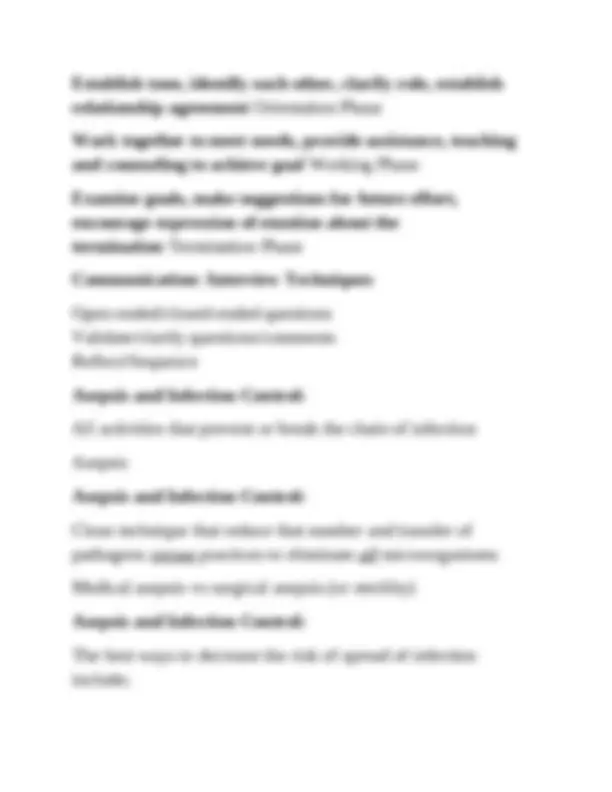

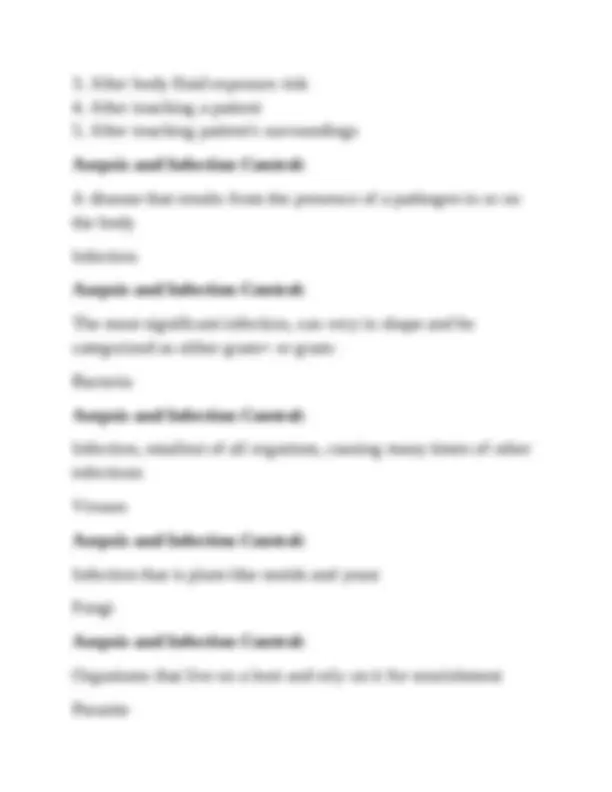
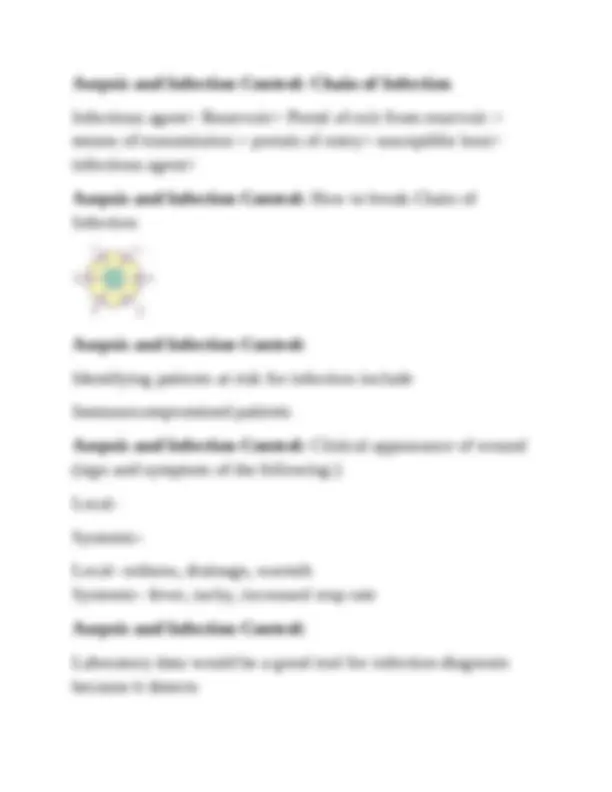
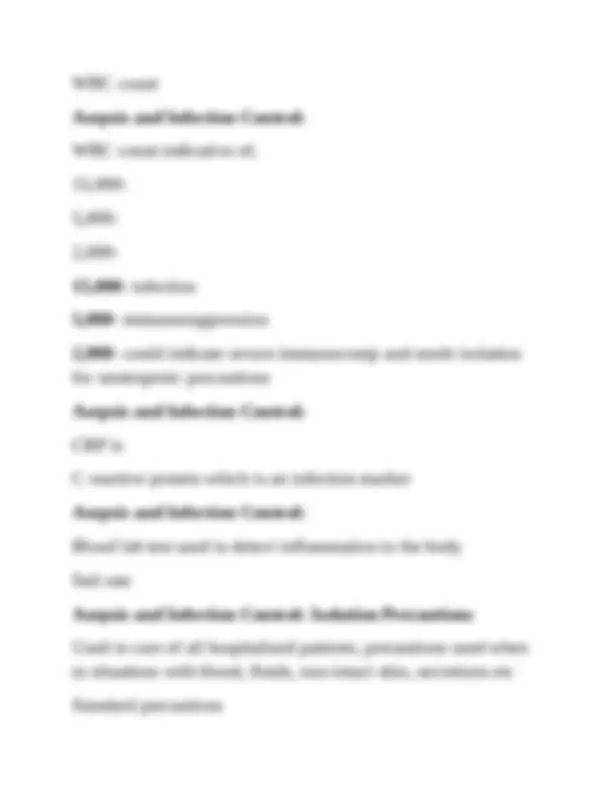
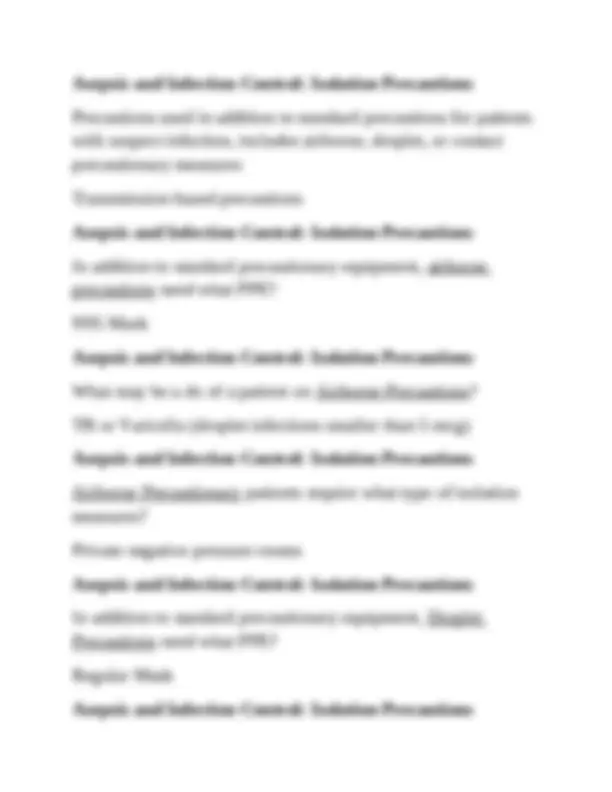
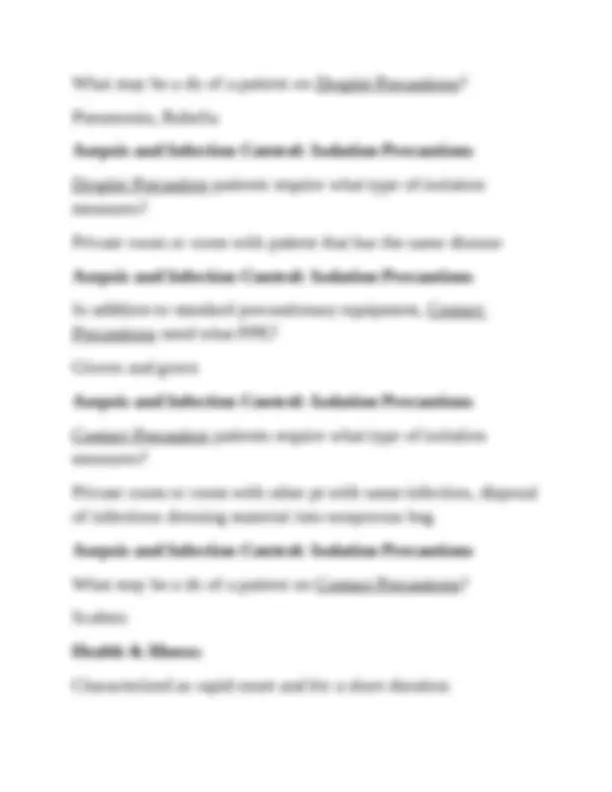
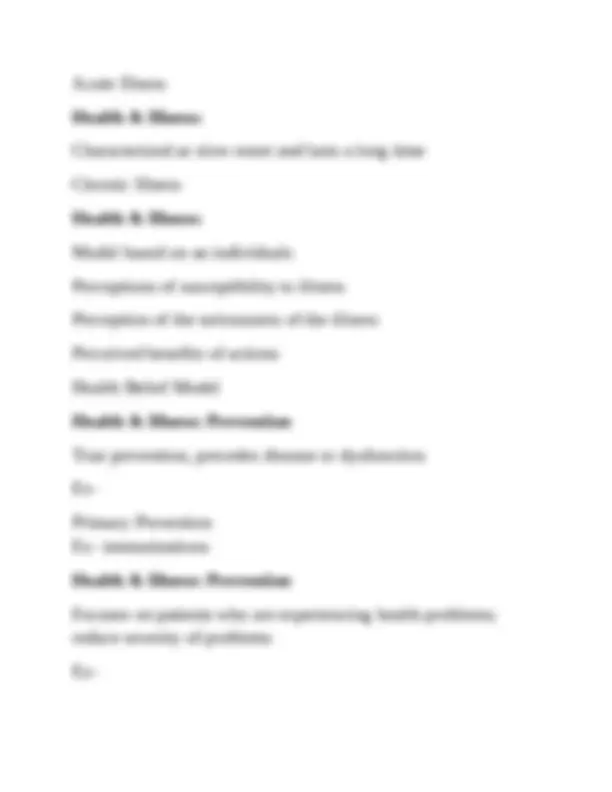
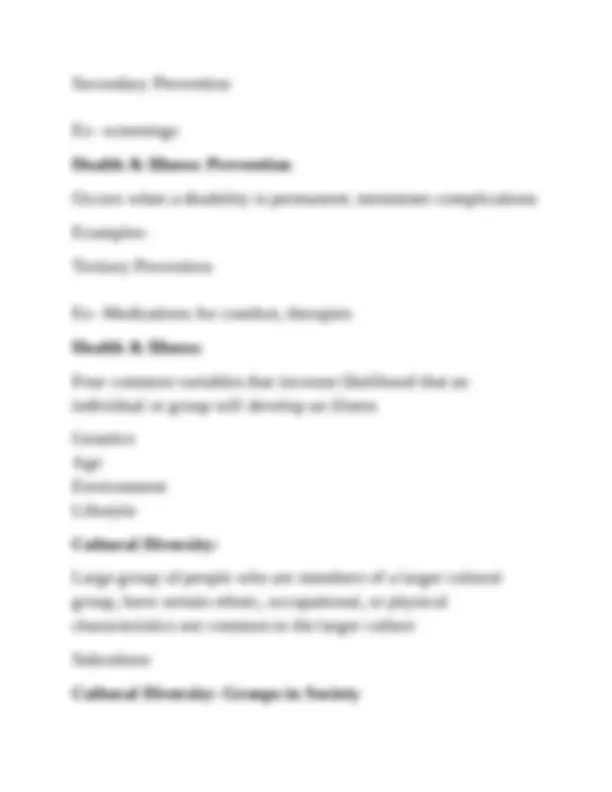
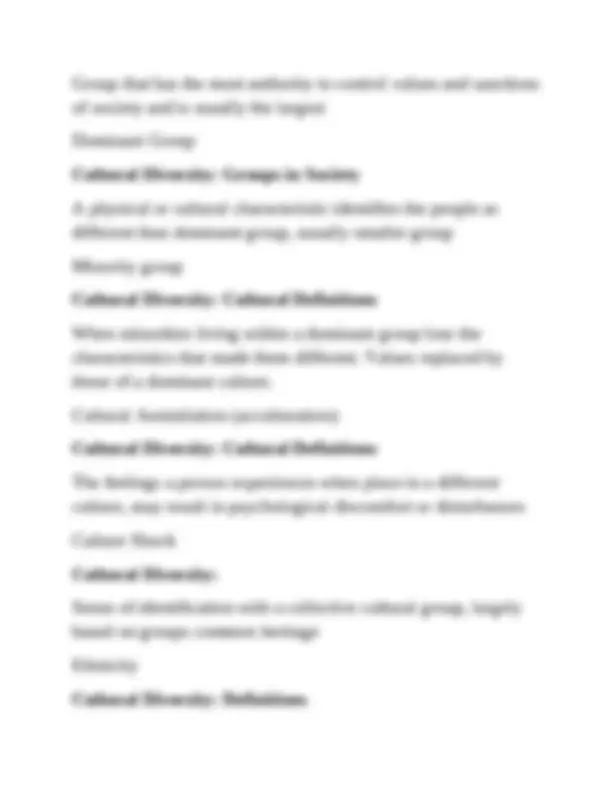
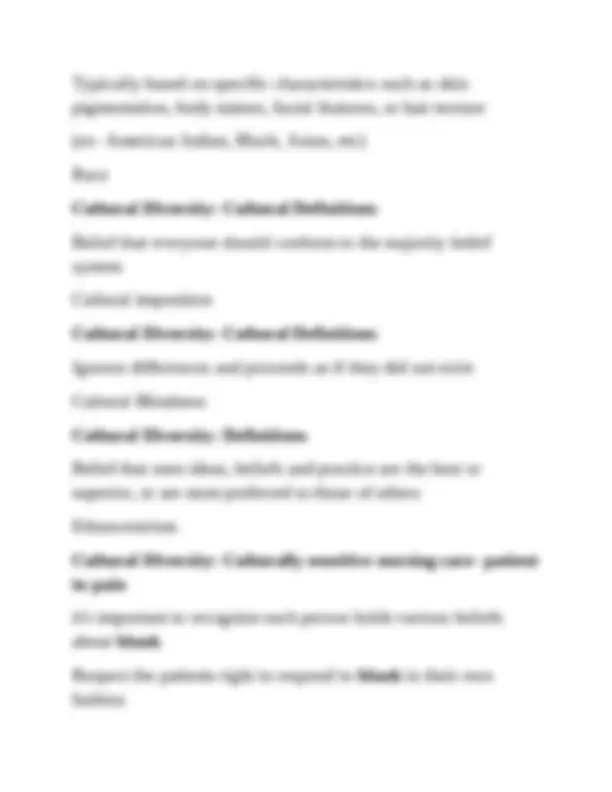
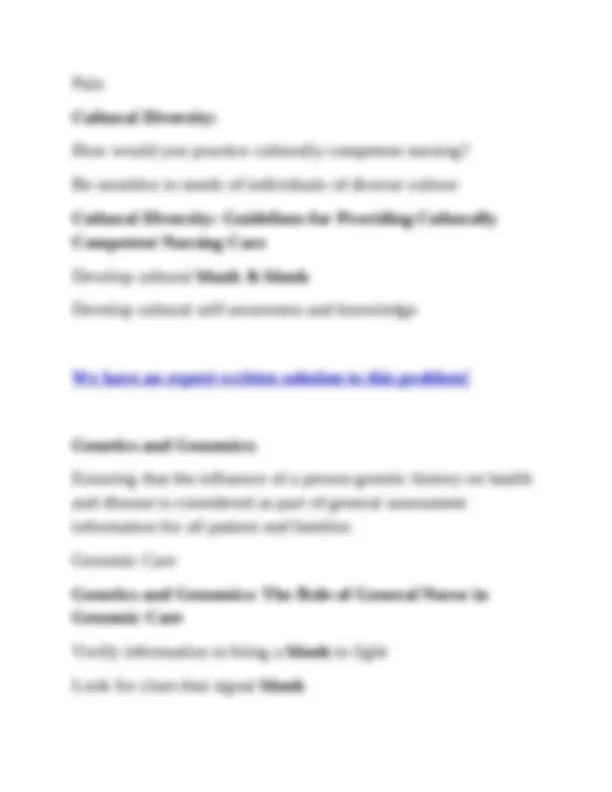
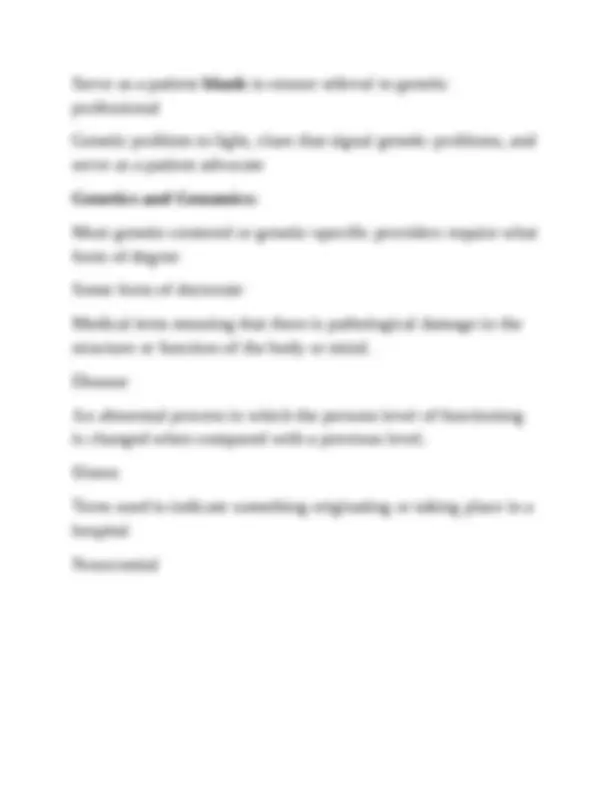


Study with the several resources on Docsity

Earn points by helping other students or get them with a premium plan


Prepare for your exams
Study with the several resources on Docsity

Earn points to download
Earn points by helping other students or get them with a premium plan
Community
Ask the community for help and clear up your study doubts
Discover the best universities in your country according to Docsity users
Free resources
Download our free guides on studying techniques, anxiety management strategies, and thesis advice from Docsity tutors
A comprehensive overview of orem's self-care theory, a foundational concept in nursing. It includes a detailed explanation of the theory's core principles, including self-care requisites, self-care deficit theory, and nursing systems. The document also features a series of exam questions with complete solutions, making it a valuable resource for students preparing for exams or seeking a deeper understanding of the theory.
Typology: Exams
1 / 30

This page cannot be seen from the preview
Don't miss anything!























N300 Exam 1 Questions With Complete Solutions This theory is originally based on action theory which views the person as a deliberate actor or agent in their Self-Care. Orem- Theory of Self-care This theory covers a broad scope with general concepts with the philosophy that 1. all patients want to care for themselves and 2. they are able to recover more quickly and holistically by performing their own self care Orem Philosophy (theory) Orems three interrelated theories in which the general theory of nursing is based on:
the person's ability to engage in self -care based on basic conditioning factors. Person is usually defined as maturing or matured Self-care agency (agent) Orem Who is considered to be your self-care agent if you are an able adult? Yourself Orem Who is considered to be a minor of impaired individuals self- care agent? You are always your own self-care agent, but minors/impaired individuals depend on a dependent care agent Orem: factors such as age, gender, culture, etc. that influence the individuals ability to meet self-care needs or self-care requisites Basic conditioning factors Orem: 10 basic conditioning factors (what influences the individuals ability to meet self-care needs)
The totality of self care actions to be performed in order to meet self-care requisites Therapeutic self-care demand Orem: Self-care requisites Associated with life processes and maintenance of human structure and functioning common to everyone (general needs of everyone) ex- intake of air, water, and food, elimination, rest, normal function and development etc Universal Self-care requisites (USCR) Orem: Self-care requisites Either specialized expressions of universal self-care requisites that have been particularized for the development process or they are new requisites derived from a condition or event ex- adjusting to a new job or body changes due to surgery Developmental Self-care Requisites (DSCR) Orem: Self-care requisites Developmental self-care requisites can be subdivided into: Maturational or situational Orem: Self-care requisites
Needs that occur when individuals live with states of injury and illness. Seeking appropriate medical help and being aware of, taking care of conditions. Basically, is the patient taking treatment measurements need- ask yourself are they compliant. Health deviation self-care (HDSCR) Orem: Theory Identifying when nursing care is needed and self-care is lacking. Nursing is required when the person is unable to or is limited in providing effective care. When demands exceed abilities. Self-care Deficit Theory (SCDT) Orem: What category is this? USCR, DSCR, or HDSCR Sp02 88% 6 month old w/ RSV Lunch intake of 50% Noncompliant 75 yo Diabetic Sp02 88% universal- everyone needs to breath 6 month old w/ RSV development- linked to age Lunch intake of 50% universal- everyone needs to eat Noncompliant 75 yo diabetic health deviation- "non- compliant" Orem: What category is this? USCR, DSCR, or HDSCR
Orem: Theory of Nursing Systems Both nurse and self-care agent engage in meeting self-care needs. Situation where both the patient and nurse perform measures that improve outcomes together. Ex- mastectomy pt can perform own ADL but needs help with dressing changes Partially compensatory nursing system Orem: Theory of Nursing Systems Self-care agents are able to perform Self-Care with assistance that enhances knowledge, skills acquisition and decision- making. Situation where patient is able to perform all tasks but needs direction in regard to decision making, behavioral control, or acquiring knowledge. ex-newly diagnosed diabetic needing teaching for home maintenance Supporting educative nursing system Orem: Which Nursing System is needed? Wholly, Partial, or Supportive Educative Comatose patient Patient recently diagnosed with HTN Patient w/ new colostomy Patient with C3 C4 injury post MVA
Bulimic patient Patient w/ recent CABG Comatose patient wholly Patient recently diagnosed with HTN supportive educative Patient w/ new colostomy partial Patient with C3 C4 injury post MVA wholly Bulimic patient supportive Patient w/ recent CABG partial Orem: Self-care Glossary The individual or group taking action Agent Orem: Self-care Glossary The power to engage in action to achieve specific goals, power includes knowledge, skills, motivation, energy, and congruency Agency Orem: Self-care Glossary Choosing purposeful goal directed actions that require the coordination of cognitive and sensorimotor capabilites Deliberative Action Orem: Self-care Glossary
Patient, family, past medical records, lab results and vitals, other providers/research Nursing Process: Two types of data- Patients perceptions versus Observations based on an accepted standard, measurable and concrete, can be verified by another person Subjective and Objective Nursing Process: Subjective or Objective? BP 120/ "I feel sick to my stomach" Urine output 500 mL "I'm overweight" Tolerated activity well BP 120/70 O "I feel sick to my stomach" S Urine output 500 mL O "I'm overweight" S Tolerated activity well S Nursing Process: Four Types of assessments
hint: utilizes your senses Inspection, palpation, percussion, auscultation Nursing Process: What is usually used within documentation to back up objective data? Subjective data Nursing Process: Purpose of Nursing diagnosis Describing actual or potential problems Nursing Process: Nursing Diagnosis contains what three parts NANDA, Etiology of problem, symptoms Nursing Process: Nursing Diagnosis 3 part statement includes (provided information: dx of emphysema, Ineffective airway clearance (NANDA), excessive mucous, considering varying symptoms) NANDA (Ineffective airway clearance) r/t excessive mucous secondary to emphysema, as manifested by symptoms Nursing Process: Nursing Diagnosis In your 3 par statement, when can you use "secondary to..." When already provided with some patient dx
What is one of the most important parts of this phase of the nursing process? Documentation Nursing Process: Evaluation Purpose of this phase of nursing process Determines the effectiveness of the care plan T/F during the nursing process, the evaluation phase is an on- going process? True Nursing Process: Evaluation What is to be determined at this phase of the nursing process? Did the patient met, partially met, or not met the intended goal? *Include patient data to support findings Nursing Process: Evaluation What should the nurse do if he/she has determined goals have no been met or are partially met upon evaluation? Revise as necessary Nursing Process: Evaluation Evaluative statements should include... and should also include what if goal was not achieved?
patient behaviors to support the statement and recommendations for resisting plan if goal not achieved ex- goal was partially met. patient was able to cough effectively but lung sounds were still not clear. begin encouraging use of incentive spirometer. The following are five parts of the Stimulus/referent Sender/source of message (encoder) Message itself Medium or channel of communication Receiver Berlo Communication Process Communication: Two forms of communication Verbal (language) and nonverbal (body language) Communication: Aspects of Verbal Communication Interpretation of words meanings influenced by thoughts, feelings or ideas pole have about the word (what is important to consider when communicating with your patient?)
Small-group Organizational Communication: Levels of communication Way in which nurses utilize communication to give community presentations, teach, or write about nursing or healthcare topics Group (or Public) communication Communication: Factors influencing communication Gender, developmental level, socio-cultural differences, space, physical, mental and emotional state Communication: Communication tools in Healthcare a teamwork system designed for health care professionalisms improving patient safety with the goal of improving communication and teamwork skills TeamSTEPPS Communication: Communication tools in Healthcare Acronym used to convey concern, uncomfortability, and a potential safety issue C I am concerned U I am uncomfortable S This is a safety issue
Communication: Communication tools in Healthcare Used by verifying and validating information that has been exchanged, using closed loop communication Read-back Communication: Communication tools in Healthcare Quick assessment with use of situation, background, assessment and recommendation S ituation B ackground A ssessment R eccomendation Communication: Three phases of the helping relationship Orientation phase, working phase, termination phase Communication: Three phases of the helping relationship Establish tone, identify each other, clarify role, establish relationship agreement Work together to meet needs, provide assistance, teaching and counseling to achieve goal Examine goals, make suggestions for future effort, encourage expression of emotion about the termination
Wear mask/gown, use of isolation precautions, wear gloves with all patients, basic hand hygiene Asepsis and Infection Control: Medical or Surgical Asepsis? Wearing gloves when emptying a bedpan. Keeping sterile hands above your waist. Changing linens daily. Never reaching across a sterile field. Discarding sterile gauze that is slightly wet. Keeping nails short and clean. Wearing gloves when emptying a bedpan - Medical Keeping sterile hands above your waist - Surgical Changing linens daily - Medical Never reaching across a sterile field - Surgical Discarding sterile gauze that is slightly wet - Medical Keeping nails short and clean - Medical Asepsis and Infection Control: Five moments for Hand Hygiene (*Assuming you're not wearing gloves)